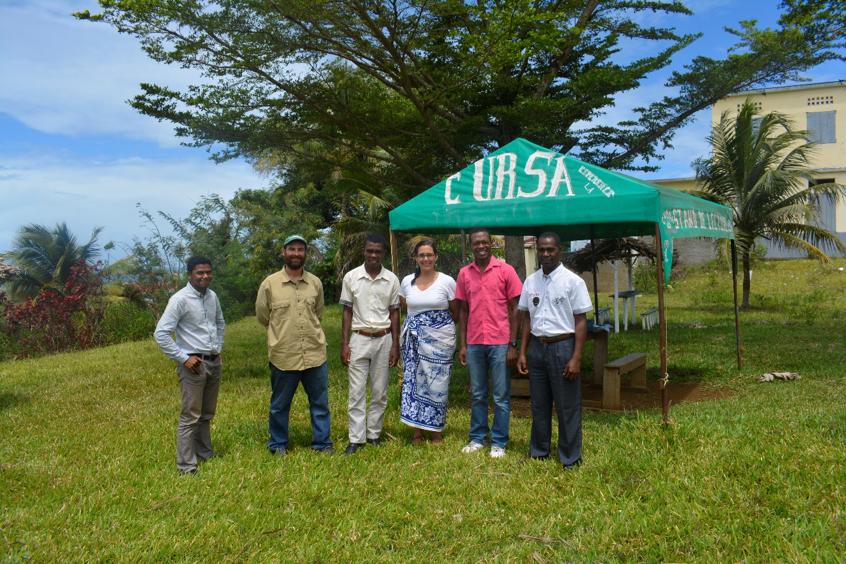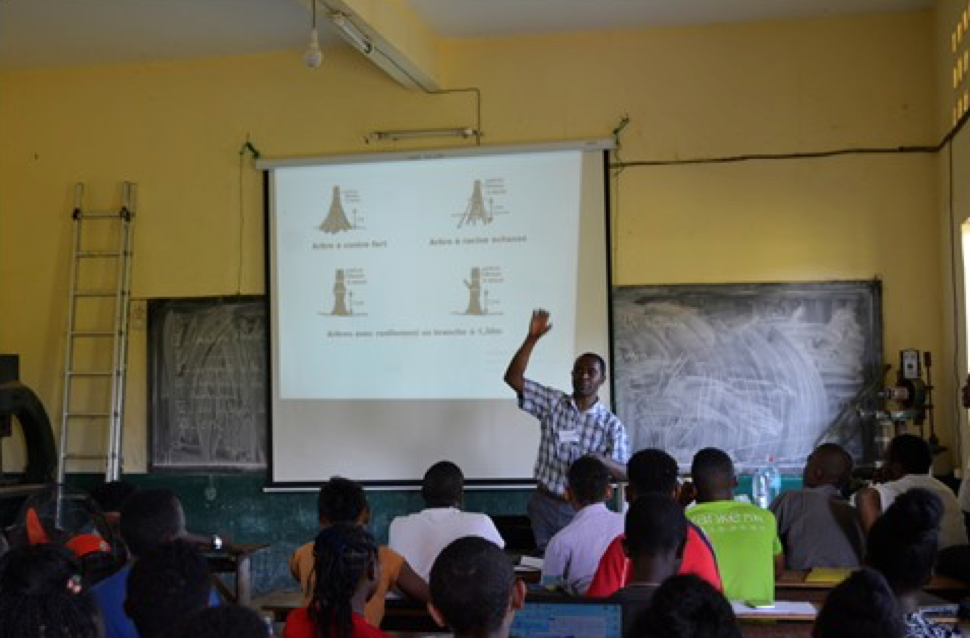DLC-SAVA Conservation forging new collaborations with CURSA, the university of SAVA region: A three-part series
By James Herrera, Program Coordinator, DLC-SAVA Conservation
During my first few months working with the DLC-SAVA Conservation program, I had the great pleasure of meeting and collaborating with the only university in the region, the Centre Universitaire Régional de la SAVA, or CURSA. There are about 30 professors based in SAVA (the northeastern region of Madagascar), and CURSA also brings in professors from other universities around the country to lecture on a diverse curriculum, including natural resource management, biochemistry, French and English Literature.
A new director oversees the university’s functions, Dr. Manjaribe Christophe. A scientist and teacher turned administrator, Christophe got his Ph.D. studying plant recruitment and regeneration patterns after deforestation and reforestation efforts in southeast Madagascar. He brings his expertise in botany and enthusiasm for conservation to reinvigorate the undergraduate curriculum at CURSA.

CURSA, the university for SAVA region, is located on a hill just on the outside of Antalaha. With a beautiful view of the city and the Indian Ocean, and a campus alive with students and faculty, CURSA is a truly picturesque place for SAVA residents to gain a higher education.
Teachers and professors at CURSA are largely residents of the SAVA region, and they know the educational needs of the communities. I have had the great pleasure of meeting and working closely with Fulgence Thio Rosin, Marie Roland, Beatrise, Tolotra, and Dimby Soa, among others, both on campus, in the rural countryside, and in the national park. These faculty and more create a vibrant educational space for CURSA students to learn diverse topics and skills.
CURSA is also preparing to create an agronomy focus. They have secured land on which to create experimental and demonstration plots of sustainable agricultural intensification, including agroforestry. Working closely with rural communities, these sites will create learning opportunities for college students and farmers.
I would like to expand on three opportunities I had to engage with CURSA faculty and students. This will be the first part of a three-part series. The first was an ecology workshop geared towards teaching senior students methods in field biology. The second part will detail student involvement in the agroecology workshop focused on organic and regenerative farming methods. The third part will discuss CURSA community outreach, volunteering to help in a tree nursery. Each of these opportunities gave me nuanced background on what the university and students are like, and how important the university is for education, research, and community building.
Field Ecology and Conservation workshop in Marojejy National Park
Our first project together was a field school for the 40 senior undergraduate students. First described in our January 2020 newsletter, we at DLC-SAVA worked closely with CURSA to help them lead a two-week workshop focused on theory and methods in field biology. First, CURSA faculty and DLC-SAVA staff gave lectures on key themes in ecology and conservation, including theory and methods. Christophe, Fulgence, and Marie Roland gave lectures and administered exams on key concepts in ecology and conservation.

Dr. Manjaribe Christophe, director of CURSA, introduces forest tree ecology and plant methods.
The next day, we all loaded into a bus for the three-hour drive to Marojejy National park. During six days of field research in Marojejy, Christophe, Fulgence, Tolotra, and recent CURSA graduates Thorien and Evrard led the 40 students for field training in plants, frogs and reptiles, and butterflies. Students learned to enter data using tablets, donated by the German research consortium, Diversity Turn in Land Use Sciences. While camping, students and faculty also discussed research papers by candle light. The articles included ecological restoration, with a paper written by Christophe from his PhD research, and how species respond to habitat disturbance such as deforestation. Guest lectures included the history of Marojejy National Park by local village elders Theor and Edouard, who could tell the students about the development of the park from their first-hand experience.

Field ecology in Marojejy. For almost all students, this was their first trip to the national park. Left, students and teachers proudly commemorate their trip to the park. Next, teacher Fulgence explains how to identify species of leaf-tailed geckos. Lastly, Evrard demonstrates to students how to set up butterfly traps.
After a week of lectures and in-field hands-on activities, the students and teachers returned to CURSA. Rather than rest, they jumped back into the classroom for lectures on research design and data analysis. After collecting real data on a gradient from the disturbed forest edges to the pristine interior, teachers explained how to test hypotheses using statistical software. Students shared personal laptops and the computers that CURSA had at their disposal.
Fulgence also gave an exemplary research presentation to illustrate to students the standard style of a scientific presentation. For many this was their first exposure to a full-length scientific PowerPoint presentation.
Students analyzed their data and interpreted their results throughout the rest of the week, and prepared PowerPoint presentations on their preliminary research findings. They were able to articulate the relevance of their study for conservation, the hypotheses they were testing, and the results they found. Students also offered the teachers suggestions for improving the workshop in the future. Overall they were extremely happy with the experience and used the methods they learned in their independent thesis research. I was impressed with the work ethic and enthusiasm the students showed, and knew from then on that I would try to increase the collaborations with CURSA in future projects.

Groups presented their results in the style of a scientific presentation. During their talks, they truly showed they had internalized the concepts they learned and were able to interpret their own results in light of ecological theory.
Thank you to DLC-Liaison Laura De Ara for all your efforts in making this workshop a success, getting students excited about butterflies, and always capturing these amazing photos. Check out the next post in this series, about how CURSA students engaged in the DLC-SAVA agroecology training with Terra Firma International.
A three-part series
Part I: Conservation Workshop in Marojejy National Park
Part II: Agroecology Workshops
Part III: Community Building at Local Tree Nursery


